The U.S. employment data for November could make or break the housing market. That’s because a stronger than expected report could put the Fed on hold on its current interest rate cutting cycle. The consensus estimate is for 202,000 new jobs with an unemployment rate of 4.2%.
The preliminary data including private payrolls (ADP – below expectations), ISM and S&P Global PMI (flat growth), job openings (JOLTS – above expectations), Challenger-Christmas layoffs (rising month over month), jobless claims (mixed), and the latest Beige Book (improved economy but still sluggish) suggests maybe the Fed can squeeze in another quarter point cut in December.
Yet the big “IF” is whether the employment data flexes its muscles. We’ll see. On the other hand, there are so many balls up in the air that just about anything seems possible. One of them is Bitcoin. The other is inflation.

Image courtesy of https://jooinn.com/images.
How Many Bitcoins Does It Take to Buy a House?
Way back in October, I penned a piece titled: “October Surprises Pile On. Hurricanes, Butterflies, and Consequences.” The take home message was that we were entering a period of unpredictable activity in the world and the financial markets based on the tenets of Chaos Theory in which the central theme is that the flapping of a butterfly’s wings in Africa could be the starting point for a hurricane. The point may be taken literally or metaphorically. Since then, just about everything one could imagine, and then some, has happened.
We are certainly in a new world. With Bitcoin finally cracking the $100,000 ceiling and with the potential for both higher prices and new support in Washington, I want to be early (as usual) in asking what perhaps may be the quintessential question of the next few years: How many Bitcoins does it take to buy a house?
According to the most recent data from the St. Louis Fed, as of October 2024, the median house price in the U.S. was $420,400. With Bitcoin trading somewhere north of $100,000, the answer is roughly four Coins – give or take a few Satoshis.
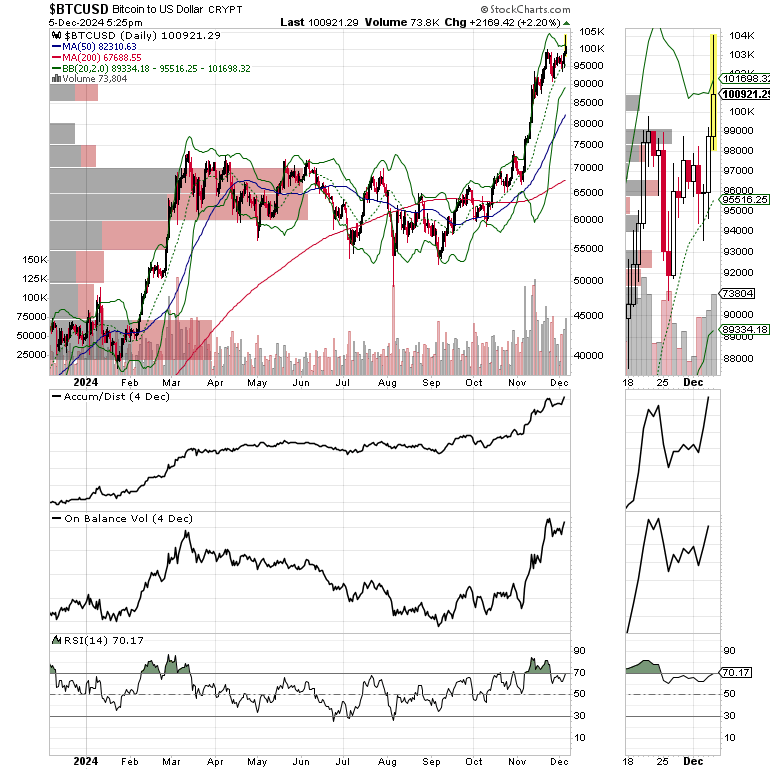
It’s only going to get more interesting from here. I'm currently long Bitcoin. You can get the details here.
Time Capsule – How to look at inflation in the real world.
It was my wife’s birthday yesterday and as is our custom we spent the day together. We capped it with dinner at her favorite restaurant, a nifty gourmet pizza place in Plano, where we enjoyed our favorites. The food was top quality and the service was excellent. Because it was in the middle of the afternoon, we had the place all to ourselves, and it was extra special for us, a relaxing time where we could be ourselves and enjoy every sip and every bite.
The bill was roughly $150, including drinks, appetizers, and dessert. It was worth it, especially in the current price climate.
On the way home we were reminiscing about the great day we spent together and the conversation drifted to the price for dinner. I told her a story about how when I was nine years old (roughly in the early 70s) when a distant uncle took a group of us, which totaled about 10-12 people to a premium steakhouse in New York where the bill was roughly $150.
She laughed and answered: “When I was born (roughly ten years earlier than my New York steak house adventure), the nurse came in the room and told my mother that she couldn’t take me home because no one had paid the $25 bill.”
I nodded my head and conceded. That butterfly has been flapping its wings for a long time.
Ahead of Non-Farm Payrolls
The next big move in homebuilder and real estate investment trusts (REITS) could start on 12/6/24. Much depends on how bond yields, which are at the bottom of their recent trading range respond to the November payrolls numbers.
All of which means that Friday could well be momentous.
On the Ground. Rising Signs of Activity Fueled by Incentives.
For some time, I’ve been writing about the structural, long term, housing shortage which is most notable in single family homes while the supply and demand situation in apartments is more varied depending on location and the cost of rent.
For example, my frequent on the ground checks reveal that new luxury apartments with built in amenities (gyms, pools, concierges) near trendy commercial spots with lots of restaurants and nearby high end grocery stores and specialty shops are more attractive to many than older complexes. Moreover, even the newly built high end properties are offering many incentives. In fact, the one property that I follow which is filling in the fastest is the one offering two-free months of rent with a corresponding lease.
Interestingly, an even higher end property which had been slow to show activity is now starting to move. I recently saw several cars parked outside its leasing office and one moving truck. It’s been open for business for about a month.
An Uncomfortable Truth: It’s Still About that Monthly Payment
While some homes are being purchased, I see a few more homes coming on the market along with lots of viewing activity at homes which I monitor. Yet the For Sale signs, in many of them, remain.
Thus, as I’ve previously noted, the decision point for anyone looking for a new place to live is the monthly payment. In other words, even if someone wishes to be a home owner, if the mortgage payment is beyond their means, they will most likely opt for a rental property, especially the ones in which the incentives are compelling.
The Bond Market is the Big Butterfly
Think of the bond market as a huge butterfly whose wings will create the winds that will influence the next financial hurricane. The recent decline in the U.S. Ten Year Note yield (TNX) has stalled at the 4.2% area, roughly corresponding to the area between the 50 and the 200-day moving averages. The bond market’s response to the employment data will likely shape the action in the financial markets for the immediate future.
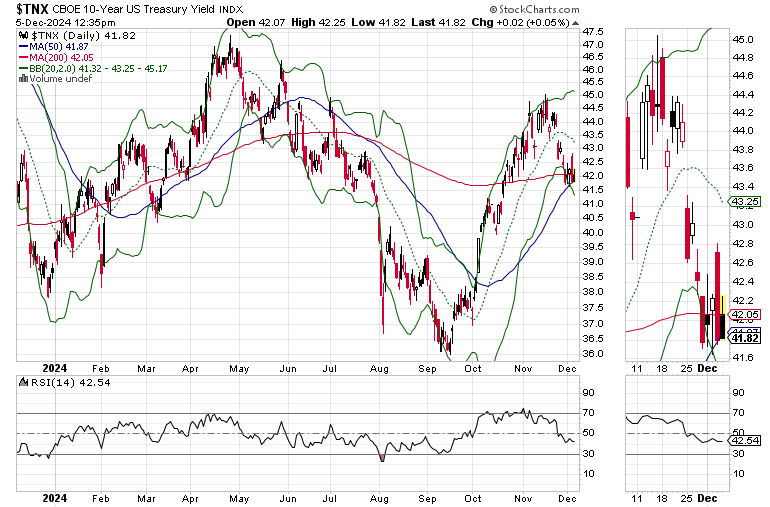
For their part mortgage rates have topped out, yet their fate depends solely on the action of TNX.
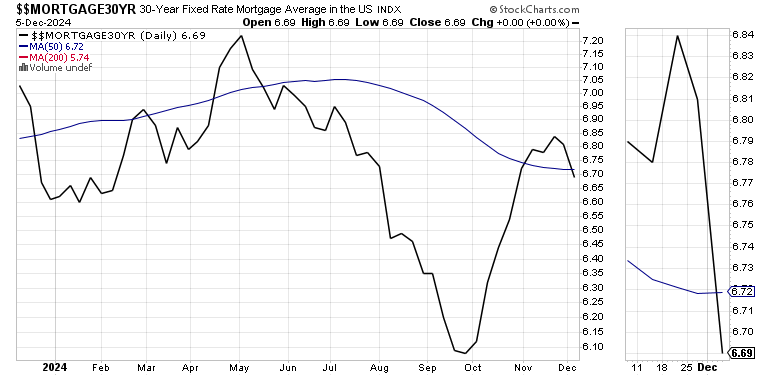
Homebuilders and REITS Wait for Numbers
The iShares U.S. Home Construction ETF (ITB) is a bit jittery of late as many investors remain concerned about the U.S. economy. The employment number will likely trigger a significant move in this ETF. The $115-$120 area is critical support.
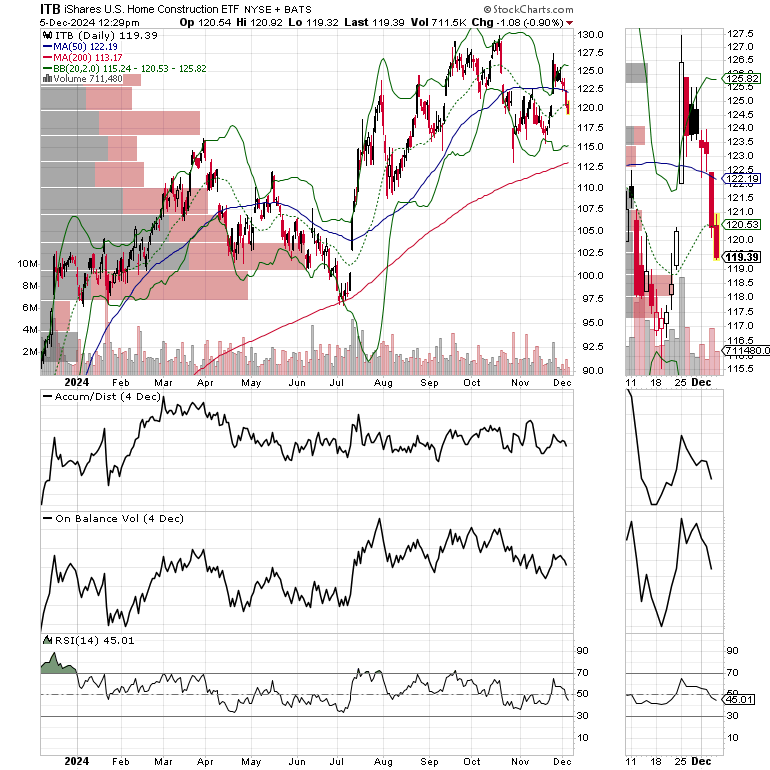
The iShares U.S. Real Estate ETF (IYR), home to many housing and commercial real estate REITs is also reflecting a bit of investor fear. The $97 area is critical support.
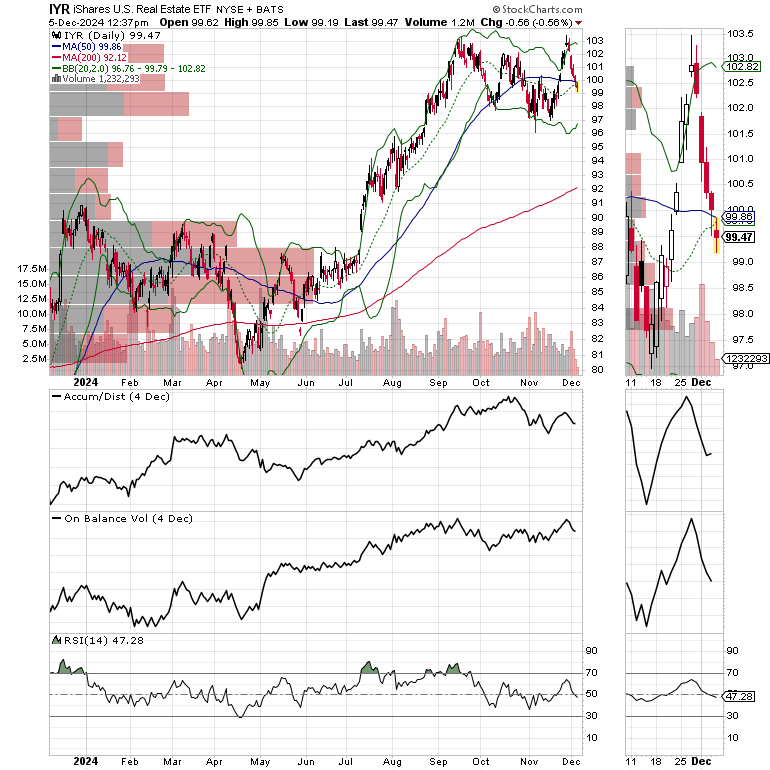
Bottom Line
We are in the proverbial uncharted waters for just about everything. The tenets of Chaos Theory are once again being proven to be tangible. The housing market is likely to be affected in a big way after the October employment data is released and the bond market reacts. The bond market’s response (the butterfly’s wings) will spill into stocks and perhaps other markets as traders handicap the Fed’s next move.
Thanks to everyone for your ongoing support. I really appreciate it.
Thanks also to all the current Buy Me a Coffee members and supporters. Special shout out to new members who now have access to the Sector Selector ETF Service, included, at no extra charge with your Buy Me a Coffee membership.
For active trading, short term trading strategies, check out the Smart Money Passport.
For longer time frame trades have a look at The Smart Money Weekender Portfolio.
If you’re thinking about day trading, my new book – Day Trading 101 (https://shorturl.at/Ad0K7)
– will get you started along the right path.
And if you like this post, hit the Like Button and Share/Restack it. It helps to spread the word.
